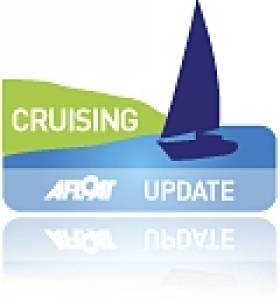Displaying items by tag: Biscay
Sailing the Bay of Biscay
#CRUISING–The Cruising Association, Britain's organisation for cruising sailors, is opening its doors to non-members in January for a guide to sailing the many stunning destinations in the Bay of Biscay.
The CA says the area has an unfair reputation for rough seas and although it can be testing, with careful planning and sensible precautions, there are some truly stunning and uncrowded destinations awaiting discovery.
Judith Grimwade, Secretary of the CA's Biscay section says "Mention Biscay to most sailors and they start to twitch, but from the rivers north of the Loire to the Spanish Rias there are some amazing destinations which are generally much less busy than some of the over-crowded channel ports and harbours. Our members have cruised these waters for years and know the secrets of what to do and what to avoid. They have amassed a wealth of practical and in-depth knowledge of the area and they'll be sharing this with non-members as well as members at this special Biscay Day."
The day includes illustrated talks by CA experts and will cover the route options of crossing from France to Spain including tips on how to make the journey by coastal hopping. There's a comprehensive guide to the Spanish Rias, the sheltered and amazingly attractive inlets on Spain's north-west coast. There's also a guide to the sheltered and attractive rivers north of the Loire and a practical step-by-step guide to the French Atlantic coast.
The CA's Specialist Biscay Day will be held at the CA's headquarters in Limehouse Basin, 1 Northey Street, London, E14 8BT on January 15th and starts at 12 noon. The cost, £27 for members and £35 for non-members, includes a hot buffet 2 course supper. Places are limited and will be allocated on a first-come first-served basis.
Solo Sailing Conference Offers Charter of Performance Yachts
Irish solo sailing fans may be interested in the annual Solo Racing Festival at the Royal Southern Yacht Club, Hamble on Saturday 12th March.
Given the Figaro race is coming to Dun Laoghaire in August a talk on the Artemis Academy with John Thorn (Figaro 2) will be of particular interest.
Owen Clarke's designer Merfyn Owen, who lives in Hamble will be attending as well as colleagues from their brokerage partners Boatshed Performance.
So whether your interest be solo sailing or short-handed sailing in general they will be there to answer questions on design, construction, as well as sale/purchase and charter of offshore performance yachts.
The Race Fair is an open house from 10.00 for race organisers to meet and greet potential skippers from; Global Ocean/Class 40, Mocra, UK mini group, RORC, SORC, Biscay Challenge, AZAB. Floating boat show, 8 boats including the OC class 40, 2 minis, A35, J105, Figaro 2, Sunfast 3200.
There is a Book Signing, Alex Bennett signing copies of High Seas High Stakes and showing Fuji DVD Mike Golding is opening the talks at 11,00.
Followed by:
Winning Mind Set with Ian Brown, sports psychologist
Global Ocean race with Oliver Dewar
Two Star/Ostar with John Lewis, RWYC
30m trimaran design with Nigel Irens (Idec, Sodebo)
Artemis Academy first term report with John Thorn (Figaro 2)
Route du Rhum with Marco Nannini, (class 40)
all in the spendid riverside setting of the Royal Southern Yacht Club, Hamble.
More HERE.
Preparing for the Challenge of La Solitaire du Figaro
Dubliner Paul O'Riain's comprehensive article on his Figaro debut experience in 2007 has moved, Click this link for it and the latest La Solitaire du Figaro news.































































